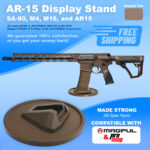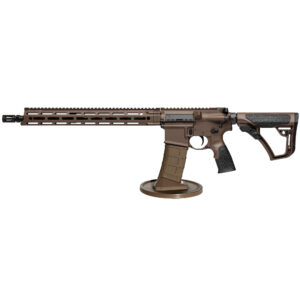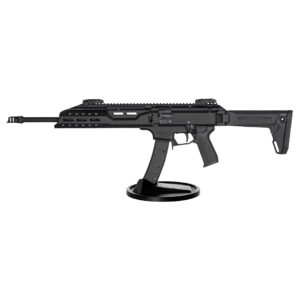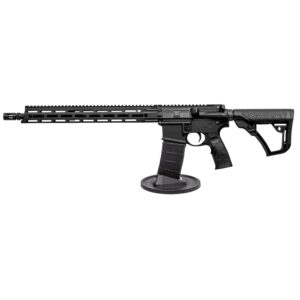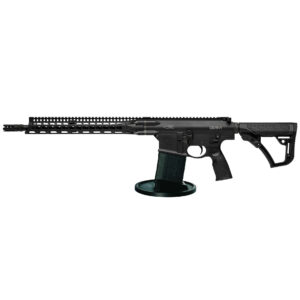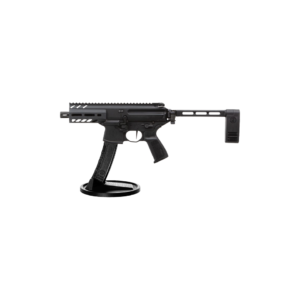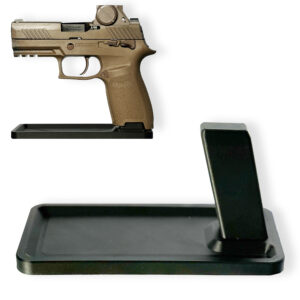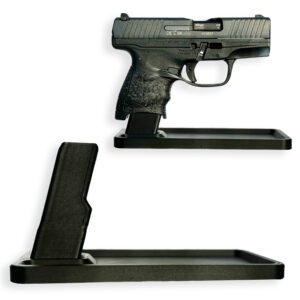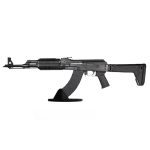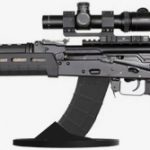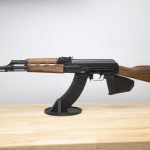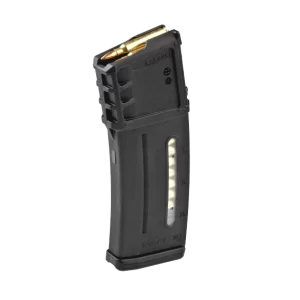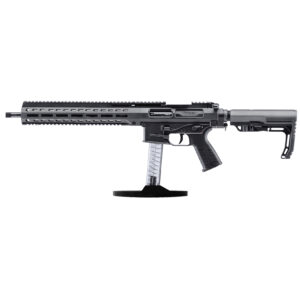Introduction To Gun Magazines
Gun magazines are an essential component of firearms, designed to house and feed ammunition reliably. As firearms have evolved over time, so too have gun magazines, becoming more advanced in their construction and functionality. The manufacturing processes and quality control measures employed in the production of gun magazines play a crucial role in ensuring their reliability, durability, and overall performance. The primary purpose of a gun magazine is to store and deliver rounds of ammunition into the firearm’s chamber.
These devices come in various shapes and sizes depending on the firearm they are designed for, ranging from detachable box magazines used in rifles to single-stack or double-stack magazines commonly found in handguns. Regardless of their specific design, all gun magazines must meet rigorous manufacturing standards to guarantee optimal functionality. Manufacturing processes for gun magazines typically involve precision engineering techniques that ensure precise dimensions and tolerances.
High-quality materials such as stainless steel or polymer composites are commonly used due to their strength, durability, and resistance to corrosion. The fabrication process may involve stamping or machining operations to shape the magazine components accurately. Once the individual components are produced, they undergo stringent quality control measures before assembly. Quality control checks assess critical aspects such as dimensional accuracy, proper fitment of parts, smooth operation of springs or followers within the magazine body, feed lip alignment for reliable cartridge feeding, and overall structural integrity.
These checks help identify any defects or inconsistencies that could affect the magazine’s performance. Gun magazine manufacturers also adhere to industry standards set by regulatory bodies like SAAMI (Sporting Arms & Ammunition Manufacturers’ Institute) or CIP (Commission Internationale Permanente pour l’Epreuve des Armes à Feu Portatives) to ensure compliance with safety protocols and functional requirements. Understanding the intricacies involved in manufacturing processes and quality control measures is essential for enthusiasts seeking reliable gun magazines that perform flawlessly when needed most.
Types Of Gun Magazines And Their Applications
Gun magazines are essential components of firearms that hold ammunition and facilitate the firing mechanism. They come in various types, each designed for specific applications and firearms. Understanding the different types of gun magazines is crucial for both manufacturers and users to ensure optimal performance and reliability. Here, we will explore some common types of gun magazines along with their respective applications.
1. Box Magazines: Box magazines are the most widely used type, characterized by their rectangular shape resembling a box. They can be detachable or fixed, depending on the firearm design. Box magazines are versatile and found in various capacities, ranging from five to thirty rounds or more. These magazines are commonly used in rifles, shotguns, and handguns.
2. Drum Magazines: Drum magazines have a cylindrical shape that allows for a higher ammunition capacity than box magazines. They can hold dozens or even hundreds of rounds, making them ideal for sustained fire or extended shooting sessions without reloading frequently. Drum magazines often find application in submachine guns or light machine guns where high-volume shooting is required.
3. Stripper Clip Magazines: Stripper clip magazines enable quick reloading by using metal strips that hold cartridges together as a unit. The entire strip is inserted into the magazine at once, expediting the process compared to loading individual rounds manually. This type is commonly employed in military rifles but has limited civilian use.
4. Tubular Magazines: Tubular magazines consist of a long tube located beneath the barrel of lever-action rifles or shotguns where cartridges are stacked end-to-end inside it. They typically have lower capacities compared to box or drum magazines but offer reliable feeding mechanisms suited for hunting or sporting purposes.
By understanding these different types of gun magazines and their applications, manufacturers can design products tailored to specific firearm needs while ensuring quality control measures align with each magazine’s intended purpose.
Importance Of Manufacturing Processes In Gun Magazine Production
The manufacturing processes employed in gun magazine production play a critical role in ensuring the reliability, durability, and overall quality of these essential firearm components. As gun magazines are responsible for feeding ammunition into the firearm’s chamber reliably and consistently, any flaws or errors during the manufacturing process can have severe consequences, compromising the functionality and safety of firearms. Therefore, implementing robust manufacturing processes is crucial to meet high-quality standards and maintain customer satisfaction.
One key aspect of gun magazine production is material selection. Manufacturers must carefully choose materials that possess desirable qualities such as strength, corrosion resistance, and dimensional stability. Typically, steel or durable polymers like reinforced nylon are utilized to withstand the stresses imposed during operation while ensuring longevity. Moreover, proper material selection also contributes to achieving weight optimization without sacrificing structural integrity.
Precision engineering is another vital aspect of manufacturing processes for gun magazines. Components such as feed lips, followers, springs, and floor plates must be machined or molded with utmost precision to ensure smooth functioning without any jams or misfeeds. The dimensional accuracy of these components directly impacts the reliability and consistency in ammunition feeding.
Furthermore, effective heat treatment processes are paramount for enhancing the strength and hardness of critical components like springs to endure repetitive loading cycles without experiencing fatigue failure. Heat treatment not only improves their mechanical properties but also helps maintain their shape under varying environmental conditions.
Lastly, stringent quality control measures throughout all stages of production are indispensable to guarantee that each magazine leaving the factory meets rigorous standards. Thorough inspections should be conducted on raw materials as well as finished products to identify defects early on and prevent faulty magazines from reaching end-users.
Overall, implementing robust manufacturing processes is imperative for gun magazine production to ensure reliability, durability, and adherence to high-quality standards that ultimately contribute to safe firearm operation and customer satisfaction.
Understanding The Quality Control Measures For Gun Magazines
Quality control plays a crucial role in ensuring the reliability and functionality of gun magazines. As an integral component of firearms, magazines must meet stringent standards to guarantee flawless performance and utmost safety. Manufacturers employ various quality control measures throughout the manufacturing process to achieve these objectives.
One of the key quality control steps involves material selection. High-quality materials, such as durable metals or impact-resistant polymers, are carefully chosen to withstand the rigorous demands placed on gun magazines. Rigorous testing is conducted to ensure that materials meet specified strength requirements, preventing malfunctions that could compromise user safety.
Precision machining is another critical aspect of quality control for gun magazines. Machining processes must be closely monitored to maintain exact dimensions and tolerances, ensuring proper fit and function within firearms. Advanced computer-controlled machining techniques are employed to achieve consistent results and minimize variations between individual magazine units.
Additionally, thorough inspections are carried out at different stages of production to identify any defects or inconsistencies. Visual inspections help detect surface imperfections or cosmetic flaws that could affect overall performance or aesthetics. Functional testing is also performed using sample units from each production batch, where magazines undergo rigorous cycling tests to evaluate feeding reliability under various conditions.
To further enhance quality control measures, manufacturers often implement statistical process control (SPC) techniques. SPC involves monitoring key manufacturing parameters during production runs and analyzing data trends over time. By continuously monitoring critical variables such as dimensions, material properties, or assembly processes, manufacturers can identify potential issues early on and take corrective actions before they impact product quality.
In conclusion, understanding the quality control measures employed during gun magazine manufacturing ensures that these essential components meet strict standards for reliability and safety. Material selection, precision machining techniques, thorough inspections throughout production stages, functional testing procedures, and statistical process control all contribute towards delivering high-quality gun magazines that firearm enthusiasts can depend on in critical situations.
Design And Material Selection For Reliable Gun Magazine Manufacturing
Designing and manufacturing a reliable gun magazine is crucial to ensure the proper functioning and longevity of firearms. This subtopic focuses on the design considerations and material selection processes that are essential for producing high-quality gun magazines.
When it comes to designing gun magazines, several factors must be taken into account. The first consideration is capacity – determining the appropriate number of rounds that can be stored in the magazine while still maintaining a compact size. Additionally, the dimensions and shape of the magazine should be designed to fit seamlessly into the firearm’s frame or grip.
Durability is another critical aspect of magazine design. The materials chosen must withstand repeated use, exposure to environmental factors, and potential impacts without compromising functionality. Typically, manufacturers opt for materials like steel or polymer due to their strength, corrosion resistance, and lightweight properties.
Material selection plays a vital role in ensuring reliability during manufacturing processes. Steel magazines are often preferred due to their robustness; however, they can be heavier than polymer alternatives. Polymer magazines offer advantages such as being lighter in weight while retaining sufficient strength and durability.
In addition to material selection, attention must also be given to the magazine’s internal components such as springs and followers. Springs need to have appropriate tension levels for reliable feeding of ammunition while avoiding issues like misfeeds or jams. The follower – a component that pushes cartridges upward within the magazine – should also be designed meticulously to prevent malfunctions.
To conclude, designing reliable gun magazines necessitates careful consideration of various factors including capacity, dimensions, durability, material selection (such as steel or polymer), as well as precise engineering of internal components like springs and followers. By focusing on these aspects throughout the manufacturing process, firearm manufacturers can produce top-quality gun magazines that meet industry standards for performance and reliability.
Step-By-Step Guide To Manufacturing Gun Magazines
Manufacturing gun magazines involves a series of intricate processes and stringent quality control measures to ensure reliable performance and safety. Here is a step-by-step guide to understanding the manufacturing process of gun magazines:
1. Design and Engineering: The first step is designing the magazine, taking into account factors such as caliber, capacity, and firearm compatibility. Engineers create detailed drawings and specifications that serve as blueprints for manufacturing. 2. Material Selection: High-quality materials are crucial for durability and functionality. Manufacturers often use steel or polymer composites due to their strength, corrosion resistance, and light weight.
3. Raw Material Preparation: In this stage, raw materials are sourced from reputable suppliers and prepared for fabrication. Steel sheets are cut into strips or stamped into precise shapes while polymers are processed into pellets or granules. 4. Fabrication: The raw materials undergo various fabrication techniques depending on the magazine type. For metal magazines, stamping or deep drawing processes shape the components before they are welded together using spot welding or laser welding techniques.
Polymer magazines are typically injection molded using heated molds. 5. Surface Treatment: To enhance corrosion resistance and provide an appealing finish, metal magazines may undergo surface treatments like bluing, parkerizing, or anodizing. 6. Assembly: Components such as springs, followers, base plates, and floor plates are assembled with precision to ensure smooth operation of the magazine. 7. Quality Control: Throughout the manufacturing process, strict quality control measures are implemented to check dimensions, tolerances, functionability, and reliability of each magazine produced.
8. Testing: Magazines undergo rigorous testing for feeding reliability using dummy rounds or live ammunition in firearms designed for specific calibers. 9. Packaging: After passing quality tests successfully, gun magazines are packaged securely along with manuals or additional accessories before being shipped out to distributors or customers.
Ensuring Precision And Accuracy In The Production Of Gun Magazines
The manufacturing of gun magazines requires a meticulous approach to ensure precision and accuracy. From the initial design phase to the final product, every step of the production process is carefully executed to meet strict quality control standards. To begin with, extensive research and development are conducted to create a design that maximizes functionality and durability. Engineers analyze various factors such as material selection, dimensions, and capacity requirements to optimize performance.
Computer-aided design (CAD) software is employed to create detailed virtual models that can be tested for reliability before any physical prototypes are produced. Once the design is finalized, the production process commences with raw materials procurement. Only high-quality materials like stainless steel or durable polymers are selected for their strength and resistance to wear. These materials undergo rigorous quality inspections upon arrival at the manufacturing facility to ensure they meet specifications.
The actual fabrication process involves cutting, stamping, forming, welding (if applicable), and finishing operations. Advanced machinery equipped with precision tools is utilized for cutting metal components or shaping polymer parts with utmost accuracy. Automated stamping processes enable consistent production of identical magazine bodies while minimizing human errors. During welding processes, skilled technicians meticulously join various components together using techniques such as TIG (tungsten inert gas) welding or laser welding.
These methods ensure strong bonds between parts without compromising structural integrity. After fabrication, each magazine undergoes thorough quality control inspections at different stages of assembly. Special attention is given to critical dimensions such as feed lip alignment and spring tension. Functionality tests are performed on a sample basis to verify reliable feeding and ejection capabilities. Before packaging for distribution, gun magazines undergo final surface treatments like coating or anodizing to enhance corrosion resistance and aesthetic appeal.
Testing Procedures To Ensure Functionality And Durability Of Gun Magazines
Ensuring the functionality and durability of gun magazines is crucial in the manufacturing process to guarantee their reliable performance in various shooting conditions. Rigorous testing procedures are employed to assess the magazine’s ability to feed ammunition consistently, withstand frequent use, and endure harsh environmental factors.
One of the primary testing procedures is the ammunition feeding test. In this test, a sample magazine is loaded with a predetermined number of rounds, typically several hundred. The magazine is then inserted into a firearm and fired continuously without interruptions or malfunctions. This test ensures that the magazine feeds ammunition smoothly and reliably, without misfeeds or jams that could compromise firearm operation.
To evaluate durability, endurance tests are conducted. These tests subject gun magazines to repeated loading and unloading cycles using standard ammunition types specified by industry standards. The magazines undergo thousands of cycles, simulating real-world usage patterns. This rigorous testing helps identify any potential weak points in construction or design that may lead to premature failure or malfunction.
Environmental testing plays a critical role as well. Magazines are exposed to extreme temperatures ranging from freezing cold to scorching heat, as well as humidity variations and corrosive environments. These conditions simulate real-life scenarios where firearms might be used, such as military operations or outdoor shooting activities. By exposing magazines to such conditions for extended periods, manufacturers can ensure their ability to withstand these challenges without degradation in performance or structural integrity.
Additionally, drop tests are conducted where loaded magazines are dropped from specified heights onto various surfaces like concrete or steel plates. This test assesses their resistance against impact forces commonly encountered during handling and accidental drops.
Through these meticulous testing procedures focused on functionality under different shooting conditions and durability against external stressors, manufacturers can confidently assert that their gun magazines meet stringent quality control standards before reaching consumers’ hands
Compliance With Industry Standards In The Manufacturing Process Of Gun Magazines
The manufacturing process of gun magazines is subject to strict adherence to industry standards to ensure the highest level of quality, reliability, and safety. Compliance with these standards is crucial for manufacturers to meet the requirements set forth by regulatory bodies and to gain trust from firearm owners. Firstly, one essential aspect of compliance with industry standards lies in the selection and use of suitable materials.
Gun magazine manufacturers must carefully choose materials that possess high strength, durability, and resistance to corrosion. Stainless steel is commonly used due to its excellent mechanical properties and resistance to rusting or pitting. Additionally, manufacturers must ensure that the dimensions and tolerances of these materials align with industry standards to guarantee proper functioning within firearms. Secondly, compliance extends throughout various stages of the manufacturing process.
This includes cutting raw materials into appropriate sizes using precision machinery while maintaining strict control over dimensional accuracy. The forming processes involved in shaping magazines should also adhere to specific guidelines outlined by industry standards. Techniques such as deep drawing or stamping are employed meticulously to avoid any structural defects that could compromise performance. Furthermore, surface finishing plays a critical role in both aesthetics and functionality.
Manufacturers must comply with industry standards for coating or plating processes like bluing or anodizing, ensuring corrosion resistance while maintaining an attractive appearance. Lastly, quality control measures are implemented at every step of manufacturing gun magazines. Compliance involves regular inspections and tests throughout production cycles using state-of-the-art equipment such as coordinate measuring machines (CMMs) or laser scanners for dimensional accuracy verification.
Additionally, functional testing is conducted on a sample basis to validate feeding reliability and overall performance. In conclusion, compliance with industry standards is fundamental for gun magazine manufacturers as it guarantees that their products meet stringent requirements regarding material selection, manufacturing processes, surface finishing techniques, and quality control measures.
Conclusion: The Role Of Quality Control In Producing High-Quality And Safe Gun Magazines
Quality control plays a pivotal role in ensuring the production of high-quality and safe gun magazines. In the manufacturing processes of gun magazines, stringent quality control measures are implemented to guarantee that each magazine meets the required standards and specifications. These measures encompass various stages, including material selection, fabrication, assembly, testing, and inspection. One crucial aspect of quality control is material selection.
Manufacturers must carefully choose materials that possess the necessary strength, durability, and reliability to withstand rigorous use. Thorough testing and evaluation are conducted on these materials to ensure they meet or exceed industry standards. The fabrication process also undergoes meticulous quality control procedures. Advanced manufacturing technologies are employed to precisely shape and form the components of gun magazines. Strict adherence to design specifications is crucial during this stage to maintain consistency in dimensions, tolerances, and overall functionality.
Assembly is another critical phase where quality control plays a vital role. Skilled technicians meticulously assemble the components with utmost precision to avoid any defects or malfunctions that could compromise safety or reliability. Regular inspections are conducted throughout the assembly process to identify any potential issues that may arise. Once assembled, gun magazines undergo comprehensive testing before being released into the market.
Various tests such as feeding reliability tests, drop tests, durability tests, and functional checks are carried out to ensure optimal performance under different conditions. Inspection is an integral part of quality control in manufacturing gun magazines. Each magazine is thoroughly inspected for defects such as cracks, flaws in welds or seams, improper fitting parts or springs, or any other irregularities that might affect performance or safety.
In conclusion, quality control plays a vital role in producing high-quality and safe gun magazines.
